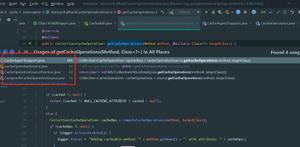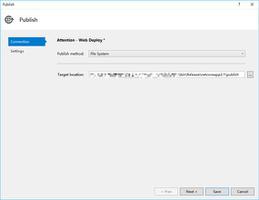Spring中Properties的配置方式
对 Spring 里面的 Properties 不理解的开发者可能会觉得有点乱,主要是因为配置方式很多种,使用方式也很多种。
本文不是原理分析、源码分析文章,只是希望可以帮助读者更好地理解和使用 Spring Properties。
Properties 的使用
本文的读者都是使用过 Spring 的,先来看看 Properties 是怎么使用的,Spring 中常用的有以下几种使用方式:
1. 在 xml 配置文件中使用
即自动替换 ${} 里面的值。
<bean id="xxx" class="com.javadoop.Xxx">
<property name="url" value="${javadoop.jdbc.url}" />
</bean>
2. 通过 @Value 注入使用
@Value("${javadoop.jdbc.url}")
private String url;
3. 通过 Environment 获取
此法有需要注意的地方。并不是所有的配置方式都支持通过 Environment 接口来获取属性值,亲测只有使用注解 @PropertySource 的时候可以用,否则会得到 null,至于怎么配置,下面马上就会说。
@Autowired
private Environment env;
public String getUrl() {
return env.getProperty("javadoop.jdbc.url");
}
如果是 Spring Boot 的 application.properties 注册的,那也是可以的。
Properties 配置
前面我们说了怎么使用我们配置的 Properties,那么该怎么配置呢?Spring 提供了很多种配置方式。
1. 通过 xml 配置
下面这个是最常用的配置方式了,很多项目都是这么写的:
<context:property-placeholder location="classpath:sys.properties" />
2. 通过 @PropertySource 配置
前面的通过 xml 配置非常常用,但是如果你也有一种要消灭所有 xml 配置文件的冲动的话,你应该使用以下方式:
@PropertySource("classpath:sys.properties")
@Configuration
public class JavaDoopConfig {
}
注意一点,@PropertySource 在这里必须搭配 @Configuration 来使用,具体不展开说了。
3. PropertyPlaceholderConfigurer
如果读者见过这个,也不必觉得奇怪,在 Spring 3.1 之前,经常就是这么使用的:
<bean class="org.springframework.beans.factory.config.PropertyPlaceholderConfigurer">
<property name="locations">
<list>
<value>classpath:sys.properties</value>
</list>
</property>
<property name="ignoreUnresolvablePlaceholders" value="true"/>
<!-- 这里可以配置一些属性 -->
</bean>
当然,我们也可以用相应的 java configuration 的版本:
@Bean
public PropertyPlaceholderConfigurer propertiess() {
PropertyPlaceholderConfigurer ppc = new PropertyPlaceholderConfigurer();
Resource[] resources = new ClassPathResource[]{new ClassPathResource("sys.properties")};
ppc.setLocations(resources);
ppc.setIgnoreUnresolvablePlaceholders(true);
return ppc;
}
4. PropertySourcesPlaceholderConfigurer
到了 Spring 3.1 的时候,引入了 PropertySourcesPlaceholderConfigurer,这是一个新的类,注意看和之前的 PropertyPlaceholderConfigurer 在名字上多了一个 Sources,所属的包也不一样,它在 Spring-Context 包中。
在配置上倒是没有什么区别:
<bean class="org.springframework.context.support.PropertySourcesPlaceholderConfigurer">
<property name="locations">
<list>
<value>classpath:sys.properties</value>
</list>
</property>
<property name="ignoreUnresolvablePlaceholders" value="true"/>
<!-- 这里可以配置一些属性 -->
</bean>
也来一个 java configuration 版本吧:
@Bean
public PropertySourcesPlaceholderConfigurer properties() {
PropertySourcesPlaceholderConfigurer pspc = new PropertySourcesPlaceholderConfigurer();
Resource[] resources = new ClassPathResource[]{new ClassPathResource("sys.properties")};
pspc.setLocations(resources);
pspc.setIgnoreUnresolvablePlaceholders(true);
return pspc;
}
Spring Boot 相关
Spring Boot 真的是好东西,开箱即用的感觉实在是太好了。这里简单介绍下相关的内容。
快速生成一个 Spring Boot 项目: https://start.spring.io/
application.properties
我们每个项目都默认有一个 application.properties 文件,这个配置文件不需要像前面说的那样进行 注册 ,Spring Boot 会帮我们自动注册。
当然,也许你想换个名字也是可以的,在启动的时候指定你的文件名字就可以了:
java -Dspring.config.location=classpath:sys.properties -jar app.jar
application-{env}.properties
为了给不同的环境指定不同的配置,我们会用到这个。
比如测试环境和生产环境的数据库连接信息就不一样。
所以,在 application.properties 的基础上,我们还需要新建 application-dev.properties 和 application-prd.properties,用于配置环境相关的信息,然后启动的时候指定环境。
java -Dspring.profiles.active=prd -jar app.jar
结果就是,application.properties 和 application-prd.properties 两个文件中的配置都会注册进去,如果有重复的 key,application-prd.properties 文件中的优先级较高。
@ConfigurationProperties
这个注解是 Spring Boot 中才有的。
即使大家不使用这个注解,大家也可能会在开源项目中看到这个,这里简单介绍下。
来一个例子直观一些。按照之前说的,在配置文件中填入下面的信息,你可以选择写入 application.properties 也可以用第一节介绍的方法。
javadoop.database.url=jdbc:mysql:
javadoop.database.username=admin
javadoop.database.password=admin123456
java 文件:
@Configuration
@ConfigurationProperties(prefix = "javadoop.database")
public class DataBase {
String url;
String username;
String password;
// getters and setters
}
这样,就在 Spring 的容器中就自动注册了一个类型为 DataBase 的 bean 了,而且属性都已经 set 好了。
在启动过程中动态修改属性值
这个我觉得都不需要太多介绍,用 Spring Boot 的应该基本上都知道。
属性配置有个覆盖顺序,也就是当出现相同的 key 的时候,以哪里的值为准。
启动参数 > application-{env}.properties > application.properties
启动参数动态设置属性:
java -Djavadoop.database.password=admin4321 -jar app.jar
另外,还可以利用系统环境变量设置属性,还可以指定随机数等等,确实很灵活,不过没什么用,就不介绍了。
总结
读者如果想要更加深入地了解 Spring 的 Properties,需要去理解 Spring 的 Environment 接口相关的源码。建议感兴趣的读者去翻翻源代码看看。
以上是 Spring中Properties的配置方式 的全部内容, 来源链接: utcz.com/z/319276.html









